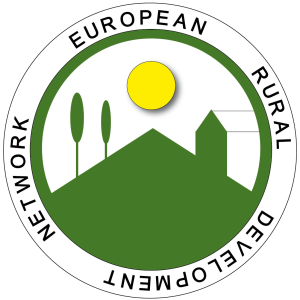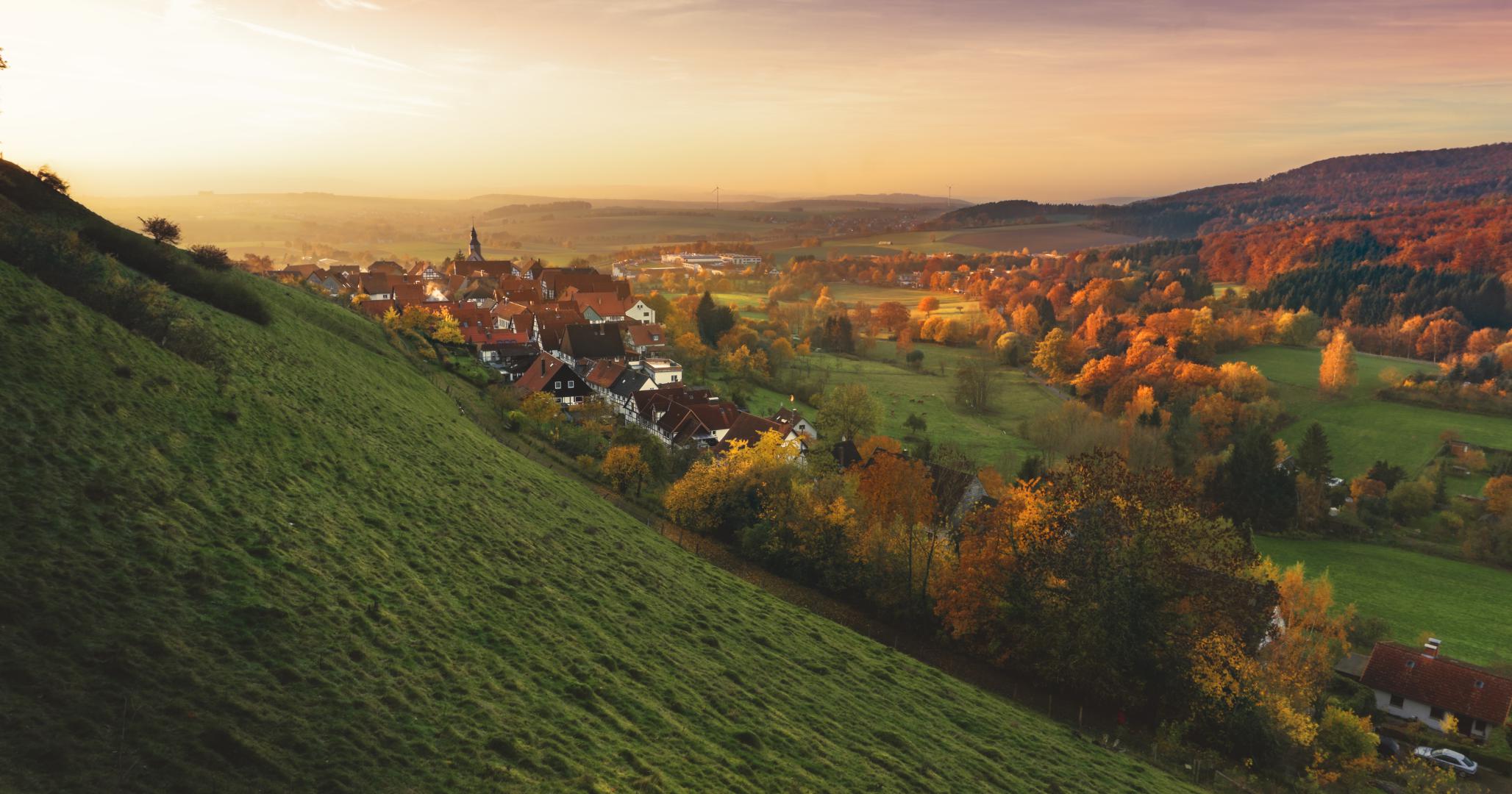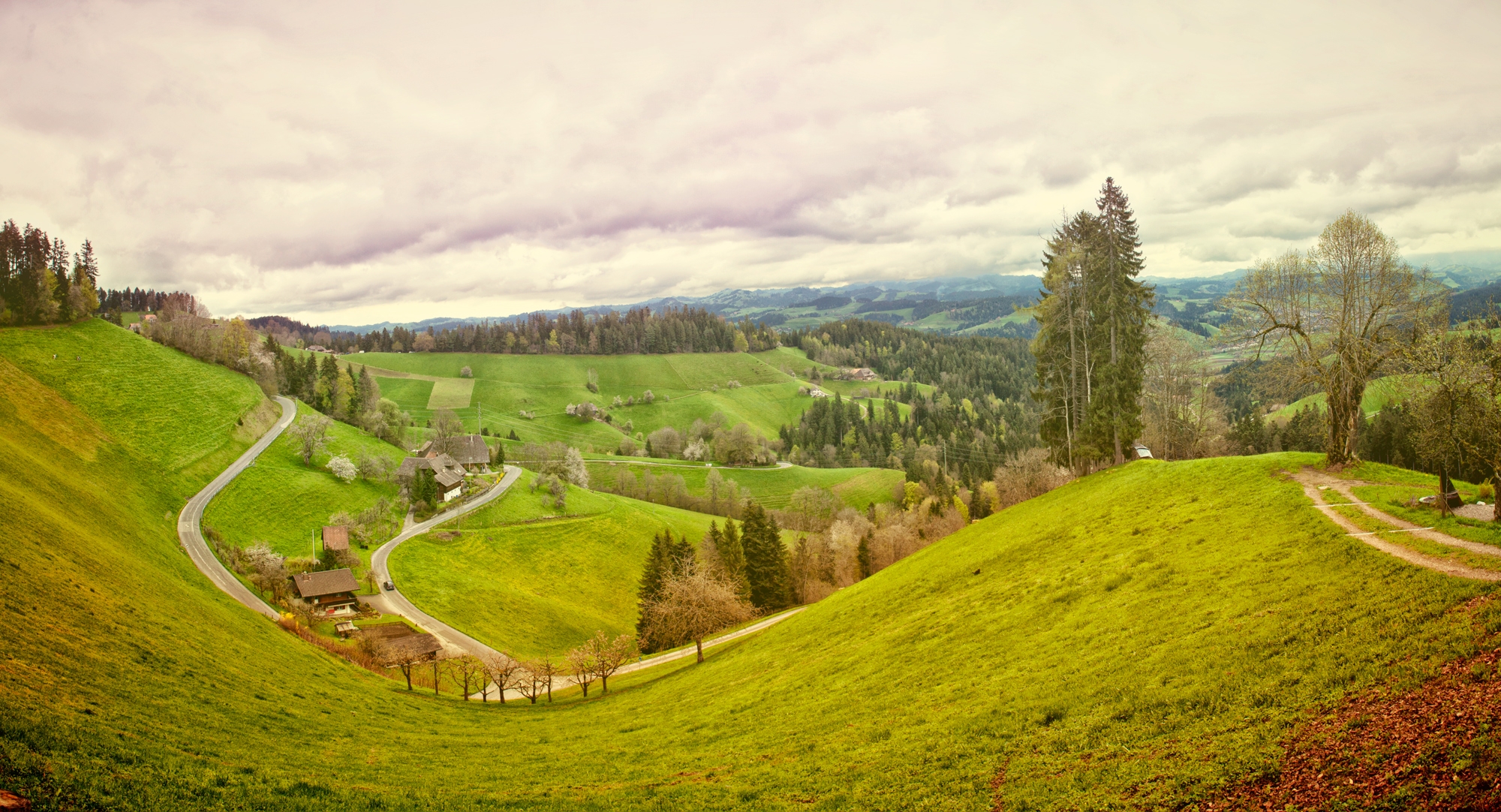 |
XVI European Rural Development Network Conference 17-19 September 2018 Cluj-Napoca, Romania |
 |
CAP 2020+: experiences and ideas for future rural areas and development
Hosted by University of Agricultural Sciences and Veterinary Medicine.
Photos available on https://www.facebook.com/ERDN.EU/
Key dates
- Deadline for abstract submission: 25 June, 2018 (the call was open till July 31st).
- Registration deadline: 1 September Link to registration form (CLOSED!). All participants should register.
- Conference: 17-19 September, 2018.
- Policy Brief: November, 2018.
- Publication of full papers in Rural Areas and Development, 16(2019) and associated journals: Spring-Summer, 2019.
Conference news and updates:
- Conference Agenda (new)
- Book of Abstracts
- Agenda of 17/09 workshops are available at the workshops site.
Conference Venue:
Life Sciences Institute, University of Agricultural Sciences and Veterinary Medicine in Cluj-Napoca,
Calea Mănăştur 3-5, 400372, Cluj-Napoca
- 17/09 Monday, 15.00-18.00 workshops will take place in the room King Ferdinand Hall of the USAMV Life Sciences Institute.
- Conference will take place in King Ferdinand Hall of the USAMV Life Sciences Institute(opening ceremony and sessions) and Queen Maria Hall (poster session).
- Dormitory rooms: Cămin „Agronomia”. str. Moţilor nr. 74-76. Ask for keys at the entrance;) WiFi is open.
- Monday 17.09.2018 – registration and reception will take place in Research Center for Biodiversity (Centrul de Cercetare pentru Biodiversitate), Strada Bogdan Petriceicu Hasdeu, Cluj-Napoca 400383. Google Maps: https://goo.gl/maps/61rgTYzBChy
(12/09/2018) – Conference Agenda
(31/08/2018): 17/09 Monday, 15.00-18.00: Development of Bioeconomy in Central and Eastern Europe – workshops (side event)
(15/08/18): Please note that on Monday afternoon there will be a side event (workshops) organised by ERDN (to be announced soon).
(1/08/18): Travel and accommodation information have been added below. Registration due 1/09/18!
On Wendnesday evening we will go to explore Cluj by night, please book the evening if you want to join us.
Registration form: register here (CLOSED)
Conference email: 16erdn2018@gmail.com
Conference objectives
The European Rural Development Network (ERDN) integrates various European research institutions, which are involved in analysing the transformation process of rural areas, particularly in Central-Eastern Europe (www.erdn.eu). The main objectives are to advance international knowledge transfer and scientific cooperation in rural development and agriculture, as well as to share and promote scientific experiences and achievements in order to support policy makers and stakeholders. The annual conferences, organised since 2002, are the basis for achieving these objectives.
Efforts in previous Common Agricultural Policy periods have enabled agricultural development but also promoted integrating other sectors of the rural economy and emphasised social and environmental concerns in rural development programmes. The European agricultural policy meets in the complex manner the main challenges, such as competitiveness, innovation in the agri-food sector, the multi-functional and sustainable rural development, food security and food quality, the public concern about the environment and public goods. However, the decreasing share of agriculture in generating GDP, the difficulties in correctly addressing measures for the development of the potential of family farming, as well as the growing challenges ahead of rural development, direct our interest in the future of rural areas in European Union policy after 2020.
The ERDN conference will make opportunity for European researchers to meet and discuss achievements and experiences resulting from the implementation of the agricultural policies in the European countries (with particular focus on CEECs economies, including non-EU states), as well as the challenges and economic, environmental and social dilemmas which are faced by the family farming and rural areas in XXI century. The considerations are expected to be a part of a debate at the EU forum over the scope of regulations bur also financing of rural-related issues in the future CAP.
ERDN community would like to contribute to this discussion with perspective of rural systems and local development.
The conference aims to stimulate methodological, theoretical and empirical contributions which provide better understanding of development paths of rural systems as well as reseach-based evidence for better policy design and implementation in rural areas. Experiences from the RDP 2014-2020 projects or results of the evaluation process, as well of new research on rural development will be welcomed.
While abstracts on past and future CAP and national policies (in EU and non-EU countries) in agriculture and rural areas are welcome, the following topics are likely to be of particular interest:
- Future CAP budget and its possible implications for rural and regional development (national perspectives);
- Public policy for rural development in Central Eastern European Countries,
- Agriculture and health: A future CAP for a healthy lifestyle.
- Spatial and territorial impacts of innovation;
- The role of CAP and Cohesion Policy measures in local/regional development,
- Local development, job creation and entrepreneurship in rural areas;
- Experiences and future ideas for LEADER approach in EU member states;
- The effects of human capital and innovation on rural development;
- Trends of rural poverty and social exclusion, effects of migration in rural areas;
- National/regional specialisation strategies;
- Transformations of family farming and local food systems,
- Subsidy programmes and other methods of financing farm diversification and entrepreneurship;
- Increasing added value in the food supply chain via food initiatives, short value chains, organic food, role of regional brands/products;
- Opportunities for the development of small, family, semi-subsistence farms;
- The role of social farms in agriculture;
- Ways of supporting new entrants and young farmers in agriculture;
- The role of agri-environmental measures of RDPs in rural landscapes;
- The agricultural knowledge and innovation system (AKIS);
- New challenges for agricultural extension services;
- Social innovation in rural areas;
- Knowledge-based modern farming;
- Public-private partnerships in agriculture and rural areas.
- Sustainable development of agriculture and rural areas including biodiversity, ecosystem services and climate change mitigation.
Submission of abstracts
Abstracts should be at least 200 words in length and should be sent to: 16erdn2018@gmail.com. Each abstract will be double-blind peer reviewed for inclusion in the conference programme by members of the conference Scientific Board.
Presentations
All speakers will have an oral presentation of up to 15 minutes which can be accompanied by slides in PowerPoint® format. The conference will be held in English without translation facilities, also a French-language and poster sessions will be organised.
Further details
There is no conference fee but participants are expected to pay their own hotel accommodation costs. Dormitory and hotels are listed below.
Each conference paper will be ‘double-blind’ peer reviewed for inclusion in the ERDN Rural Areas and Development yearbook as well as associated journals.
The conference presentations, papers and discussion will lead to ERDN Policy Brief with recommendations for future CAP and especially to Pillar II of rural policy.
Each presenter will be asked to end her/his presentation with one (more general) recommendation for development of rural areas post 2020, that should be evidence-based conclusion of own, present and past research. CEECs’ perspective is highly welcomed. During the conference we will discuss all of them, agree and prepare a policy brief.
Accommodation info
Option 1: UNIVERSITY ACCOMMODATION: Agronomia Student Hostel (50 rooms), 74-76 Moţilor str., Cluj Napoca, walk 15 min to the USAMV Campus. Rooms: 40 EURO/room/night (single use) or 20 EURO/person/night (in double room). Breakfast included. Booking via registration form.
0ption 2: HOTELS NEAR UNIVERSITY:
We recommend five hotels in the proximity of the Conference venue.
These hotels should be contacted directly (or via booking portals, for example see.: booking.com/cluj):
- Hotel Pami 3 stars, 20 rooms, single room 40 EURO, double room, 58 EURO, walking distance: 10 min to the USAMV campus, hotel address: 39 Manastur str., http://www.hotelpami.com/
- Hotel Napoca 4 stars, 160 rooms, single or double rooms, range of prices 50-55 EURO, walking distance: 25 min to the USAMV campus, hotel address: 1 Octavian Goga str., http://www.hotelnapoca.ro/
- Hotel Sport 3 stars, 136 rooms, single room 30 EURO, double room, 45 EURO, walking distance: 15 min to the USAMV campus, 1 Aleea Stadionului, http://www.unita-turism.ro/ro/hotel/cluj-napoca/sport.html
- Hotel Cristal 3 stars, 20 rooms, single or double rooms, range of prices 40-50 EURO, walking distance: 10 min to the USAMV campus, hotel address: 17 Moldovei str., http://www.hotel-cristal.ro
- Hotel Vila Rosa 2-3 stars, 16 rooms, single or double rooms, range of prices 35-40 EURO, walking distance: 8 min to the USAMV campus, hotel address: 4 Frunzişului str., http://www.vilarosa.ro
Travel information
The symposium is hosted in the main campus of the University of Agricultural Sciences and Veterinary Medicine Cluj-Napoca, Romania. The campus is located close to the city center and includes more than 40 hectares of academic and research buildings. From the city center, one can reach the campus in about 20 minutes walking or in less than 10 minutes by bus or trolleybus (nr. 9, 24, 25, 26, 27, 28). A local transport ticket costs 2 lei (about 50 Eurocents).
MAPS: A map of the city center / University campus at Google Maps / A detailed map of Cluj-Napoca: CLUJ
ABOUT CLUJ-NAPOCA
Cluj-Napoca, an ancient Roman City in the heart of Transylvania, has become the economic and cultural capital of Transylvania (North-West Romania, see details at https://en.wikipedia.org/wiki/Cluj-Napoca).
Silent medieval streets and walls, full of history and hospitable people await you to enjoy Cluj monuments, churches and schools or universities. Discover the famous Transylvanian landscape, tradition as well calm and reflexive mind of people. Come and explore all the ancient and modern beauties and opportunities! The location of your hotel can be seen in the city map. A digital map of Cluj and other information are available here http://www.cluj4all.com/
Details about different touristic attractions in Cluj-Napoca may be found at: http://www.visitcluj.ro/home.html?Itemid=131
Arrival at Cluj Avram Iancu international airport
The airport is situated about 8 km from city center, which can be reached only by road (buses and taxis are available, taking about 15 minutes to reach the center). To reach the city center, Taxis are available any time (about 6-8 EURO). Recommended are the bus no. 8 and the trolleybus no. 5 (one ticket – 2 LEI). The payment is recommended to be made in the official Romanian currency – LEI (1 EURO = about 4.55 LEI). Currency exchange offices are available in the airport.
Participants travelling from other European countries have a large range of alternative choices, flying directly from London-Luton, Paris, Rome, Munchen, Koln, Wien,etc. to Cluj Napoca or via Bucharest. Many airlines have flights connecting Cluj-Napoca, e.g. TAROM, Lufthansa, Wizzair, Blue Air. For information about flight schedules, please search www.tarom.ro or www.wizzair.com or www.lufthansa.de
For non-European participants, the best choice is to fly to Bucharest Otopeni and then on to Cluj.
Arrival at the railway station
The Cluj-Napoca railway station has services to major cities in Romania (Bucharest or Timisoara, Sibiu, Oradea) and to the International railway network via Vienna-Budapest-Oradea. For details about train schedules, see http://www.cfrcalatori.ro/
Arrival by car
Cluj-Napoca is connected to western European countries via Hungary by European road E60 and highways. Travel times are about 9 hours from Vienna and about 6 hours from Budapest.
ENTRANCE VISA
Holders of an Identity card or passport from any EU country, the US and many others do not need a visa to enter Romania. Visas are required by citizens of several other countries. Lists of countries whose citizens do require a visa are given on www.mae.ro
Participants who are not EU citizens must have a valid passport, and they should check with the Romanian embassies or consulates in their respective countries. If a visa is required to enter Romania, it is better to obtain it in advance at the Romanian Embassy or Consulate in your own country. Visas can be obtained at customs on arrival, but this may cost more and formalities may take some time.
Letters of invitation. If you need an official invitation, please send an email to: 16erdn2018@gmail.com.
A letter of invitation does not imply any financial support from the symposium organizers.
OTHER INFORMATION
Local time. Romania is on East European time zone; local time is 2 hours ahead of GMT and 1 hour ahead of most European countries.
Money and Banking
Local currency: The Romanian currency is the LEU, plural LEI. All cash payments must be made in the local currency. In order to get acquainted with our currency, please visit the National Bank site at:http://www.bnr.ro/Home.aspx. 1 Euro = 4.5 lei
Changing money: currency exchange & bank cards. All major credit cards are accepted. ATMs are readily available in the town.
You may exchange cash (preferably Euro, English pounds, or US dollars) in all the banks (open 9.00 – 17.00) or Exchange offices (some of them open 24h). Please note that in most small shops and at the local market, only cash payments are accepted. It is not recommended use change facilities at the airport since less good exchange rates are offered.
Telephone, electricity
The international code for Romania is 40; in order to make an international call from Romania you must dial 00 followed by country code and number. Romania is well covered by mobile phone operators (the main ones are Orange and Vodafone) and if you come from Europe you will be able to use your mobile phone.
Electricity: 220 V, 50Hz. Standard 2-pin European plugs are used in Romania.
Weather
Cluj – Napoca has a continental climate, with hot summers and cold winters, is not usually windy and has average humidity. The weather in September is generally pleasant and sunny. Temperatures are typically 15 -20° C in the day and 4 -10° in the night. Be prepared for the possibility of rain.
For additional information about Romania and Cluj, see
http://www.turism.ro/english/factual.php or http://www.visit-romania.ro
Conference Committees
Scientific committee
- Professor dr. Cristina Bianca Pocol (USAMV Cluj Napoca) – Chair
- Dr Paweł Chmieliński (ERDN, IERiGZ-PIB Warszawa) – Co-Chair
- Professor Warzyniec Czubak (PULS Poznań) – Co-Chair
- Dr. Biró Szabocs (AKI Budapest);
- Dr Vladimir Szekely (Slovak Academy of Sciences)
- Dr Marek Wigier (IERiGZ-PIB Warszawa)
- Professor Andrzej Kowalski (IERiGŻ-PIB Warszawa)
- Professor Walenty Poczta (PULS Poznań)
- Professor Francesco Contò (University of Foggia)
- Professor Mariantonietta Fiore (University of Foggia)
- Professor Piermichele La Sala (University of Foggia)
- Professor dr. Cornel Cătoi (USAMV Cluj Napoca)
- Professor dr. Dan Vodnar (USAMV Cluj Napoca)
- Professor dr. Ioana Pop (USAMV Cluj Napoca)
- Professor dr. Roxana Vidican (USAMV Cluj Napoca)
- Professor dr. Liviu Bogdan (USAMV Cluj Napoca)
- Professor dr. Dan Dezmirean (USAMV Cluj Napoca)
- Professor dr. Sanda Andrei (USAMV Cluj Napoca)
- Professor dr. Mirela Cordea (USAMV Cluj Napoca)
- Professor dr. Marian Mihaiu (USAMV Cluj Napoca)
- Diana Elena Dumitraș USAMV Cluj-Napoca
- Dr Monica Mihaela Tudor (IAE-Romanian Academy)
- Dr Dan-Marius Voicilas (IAE-Romanian Academy)
Organising committee
- Professor dr. Cristina Bianca Pocol (USAMV Cluj Napoca)
- Dr. Paweł Chmieliński (ERDN, IERiGZ-PIB);
- Professor Warzyniec Czubak (PULS Poznań)
- Associate Professor dr. Leon Muntean (USAMV Cluj Napoca)
- Lecturer dr. Adriana Morea (USAMV Cluj Napoca)
- Lecturer dr. Tudor Sălăgean (USAMV Cluj Napoca)
- Lecturer dr. Anamaria Vâtcă (USAMV Cluj Napoca)
- Assistant dr. Lucian Cuibus (USAMV Cluj Napoca)
- PhD Student Peter Šedík (SUA in Nitra)
- PR Officer Bianca Vlaicu (USAMV Cluj Napoca)
- PR Officer Adina Oșan (USAMV Cluj Napoca)
- Master student Alexandra Vintilă (USAMV Cluj Napoca)
- Roxana Cadar (volunteer)
Host Organiser
University of Agricultural Sciences and Veterinary Medicine in Cluj-Napoca,
Calea Mănăştur 3-5, 400372, Cluj-Napoca (MAP)
Tel: +40-264-596.384 Fax: +40-264-593.792
www.usamvcluj.ro
For the general info about the University, please follow the link: http://www.youblisher.com/p/1885686-USAMV-Presentation-Brochure/Main
Main Contact Person: Professor Cristina Bianca POCOL, PhD, Rural Economy, Department of Animal Production and Food Safety, Faculty of Veterinary Medicine, cristina.pocol@usamvcluj.ro.
ERDN Contact:
dr Paweł Chmieliński, Institute of Agricultural and Food Economics – National Research Institute, Warsaw, PL
Professor Warzyniec Czubak, Poznań University of Life Sciences, Poznań, PL
Conference site: http://erdn.eu/16erdn2018/
Conference email address: 16erdn2018@gmail.com


